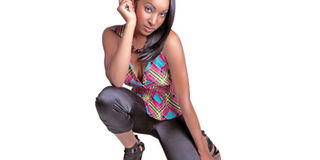Is criticism killing fashion?

Social media has turned everyone into a fashion critic – though it would be apt to call them fashion opinions. PHOTO | FILE
What you need to know:
- In 2014, Vanity Fair said personality on the red carpet disappeared with the late Joan Rivers. Criticism, it said, made celebrities bland. They coloured inside the lines.
- On the other hand, are print journalists, a breed of critics who review fashion shows and high profile personalities who impact culture.
- The flip side is that it is harder to be an outlier. Even though once on the worst dressed list you have plenty of wiggle room to be absolutely anything you want!
I succumbed to a hashtag last week and took a trip back into the 1990s, eternally referenced as the “era of great music and bad fashion”. It was, to use a fashion cliché, major. Midriff barring, exuberant and on the cusp of androgyny, it was distinct. It would be fair to say post Internet that the world is unlikely to wear a universal trend.
Without romanticising any of this, fashion appears to have lost its singularity. Trendsetters are styled celebrities with a standardised affectation. The red carpet lost its quirkiness, bodies shrunk to sample sizes and an invisible hand smoothed all the ruffles turning it generic. The world strains to fit into an amorphous, structured mould.
In 2014, Vanity Fair said personality on the red carpet disappeared with the late Joan Rivers. Criticism, it said, made celebrities bland. They coloured inside the lines. On the other hand, are print journalists, a breed of critics who review fashion shows and high profile personalities who impact culture.
SUPPORT STRUCTURE
Some even earned bans from miffed designers over coverage. Then there is the final kind. Social media has turned everyone into a fashion critic – though it would be apt to call them fashion opinions; the two do not mean the same thing. The main difference is time. The first is immediate, usually blurted, the latter considered and weighed based on prior knowledge.
Has any of this killed fashion? A glance at any Best Dressed lists holds surprises with unique, unexpected faces. The runways during fashion week compete with the front row aka FROW. Street style grows more intriguing. Models off duty is now a thing. The red carpet is huge business.
Alternate fashion blogs and magazines emerge, growing bolder and more engaging, pushing the envelope in ways only established brands used to. Instagram is becoming a dynamic source for fashion curators and brands.
Bloggers make fashion less complex and more accessible. Bloggers literally show us step by step how to do pretty much anything. TV shows and films are defined by their look. Popular characters become fashion icons. What Kenyans know is pretty much what the rest of the world knows because of the Internet.
The flip side is that it is harder to be an outlier. Even though once on the worst dressed list you have plenty of wiggle room to be absolutely anything you want! So now there is all this fashion but something is still missing. It is in this vacuum that opinions thrive. And when it comes to opinions, fashion is the new politics. And while there is such a thing as questionable fashion, the question then becomes, questionable according to whom?
Ideally, fashion opinions need a support structure. They are dependant on a constellation of factors in a culture where fashion for the most part, pays. An array of media outlets offering everything from reality and makeover shows to business ended conversations, publications and sites with multiple voices cutting a swath across various all parts of fashion from knowns like design to niches like merchandising and retail all serve to heighten the mass market’s awareness of fashion.
FASHION IS AN ART
Throw in brands running the gamut from couture to low cost clothes with one end needing criticism and the other, marketing support, PR and brand building, a vibrant arts and culture industry where intellectual pursuits like film, literature, architecture, art and music are critiqued and appreciated, a more rewarding celebrity culture, a more sophisticated use of social media by celebrities and personalities down to a finer appreciation for lifestyle brands.
Museums and fashion need a much stronger relationship. Designers find support and can showcase at a museum in cultures where fashion is viewed as art as opposed to just a hustle. Aside from fashion shows, museums can also host retrospectives, exhibitions, screenings, fundraisers, galas, events and whatever builds that bridge. The only museum hosted event at the National Museum of Kenya was by Ugandan designer Sylvia Owori over five years back. Museums bring the public into the art fold.
Fashion academics need to write papers and publish them in journals. It will not only raise the profiles of their respective institutions, it takes fashion off the dusty unused shelf where frivolous things sit into a subject worthy of an intellectual discussion.
Fashion theory for the students would be blessed. How do you know where you are going as an industry if you don’t know where you came from or who the pioneers and influencers have been over the past half century? It could be argued this is a champagne problem with no guarantees. Or, that cultivating an appreciation and joy for aesthetically pleasing things is the soul of fashion.





